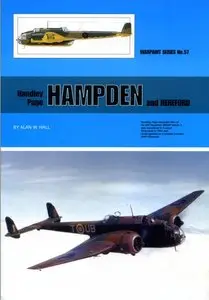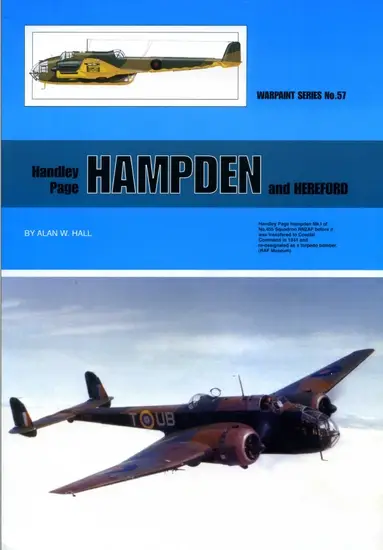Handley Page Hampden and Hereford (Warpaint Series 57) By Alan W. Hall
Publisher: Warpaint Books 2000 | 36 Pages | ASIN: B002G31XZK | PDF | 17 MB
Publisher: Warpaint Books 2000 | 36 Pages | ASIN: B002G31XZK | PDF | 17 MB
The Air Ministry in its wisdom has since before World War 2 invested in a bomber force which consisted of three different types of aircraft according to the advancement of aerodynamic technicalities and subject to time and operational requirements. The first of these were the trio of Hampden, Whitley and Wellington. As the war and tactics changed the next three were the Stirling, Halifax and Lancaster. Finally post-war saw the Valiant, Victor and Vulcan emerging as front line aircraft. But in each case one aircraft in each batch became the mainstay so that the Wellington, Lancaster and Vulcan were predominant each in its own way. The start of this succession came well before World War 2 as preliminary studies which eventually became the Hampden were started in 1932. At that time bomber squadrons were equipped with open cockpit Harts, Heyfords and Sidestrands and in issu- ing Specification B.9/32 the Air Ministry hoped for radical design developments which although still confined to a twin-engined bomber had both enclosed cockpits, a comparitively large bomb load, long range and retractable undercarriages. They got all of these in the shape of Handley Page's HP.52. Interestingly the Wellington, that outlived the Hampden operationally, also stemmed from the same B.9/32 specification. But the Hampden's gestation period was beset by restrictions. In 1932 the League of Nations Disarmament Conference, meeting in Geneva, laid down various restrictions on the construction of bomber aircraft in regard to tare weight. The aim of the conference was to eliminate armaments altogether but this was doomed to failure and in a similar manner the Air Ministry decided to disregard the tare weight restrictions and in Specification B.9/32 asked for a heavy bomber with twin engines, crew of four and, initially, a range of 1,250 miles.



